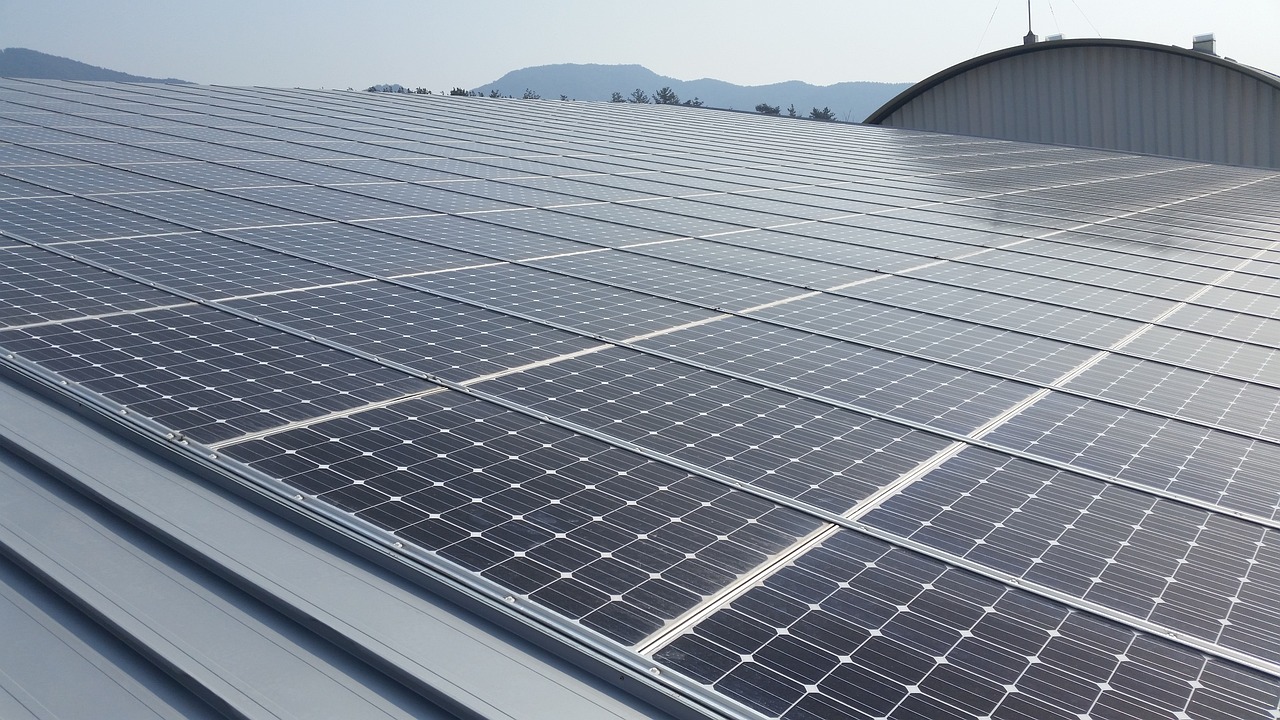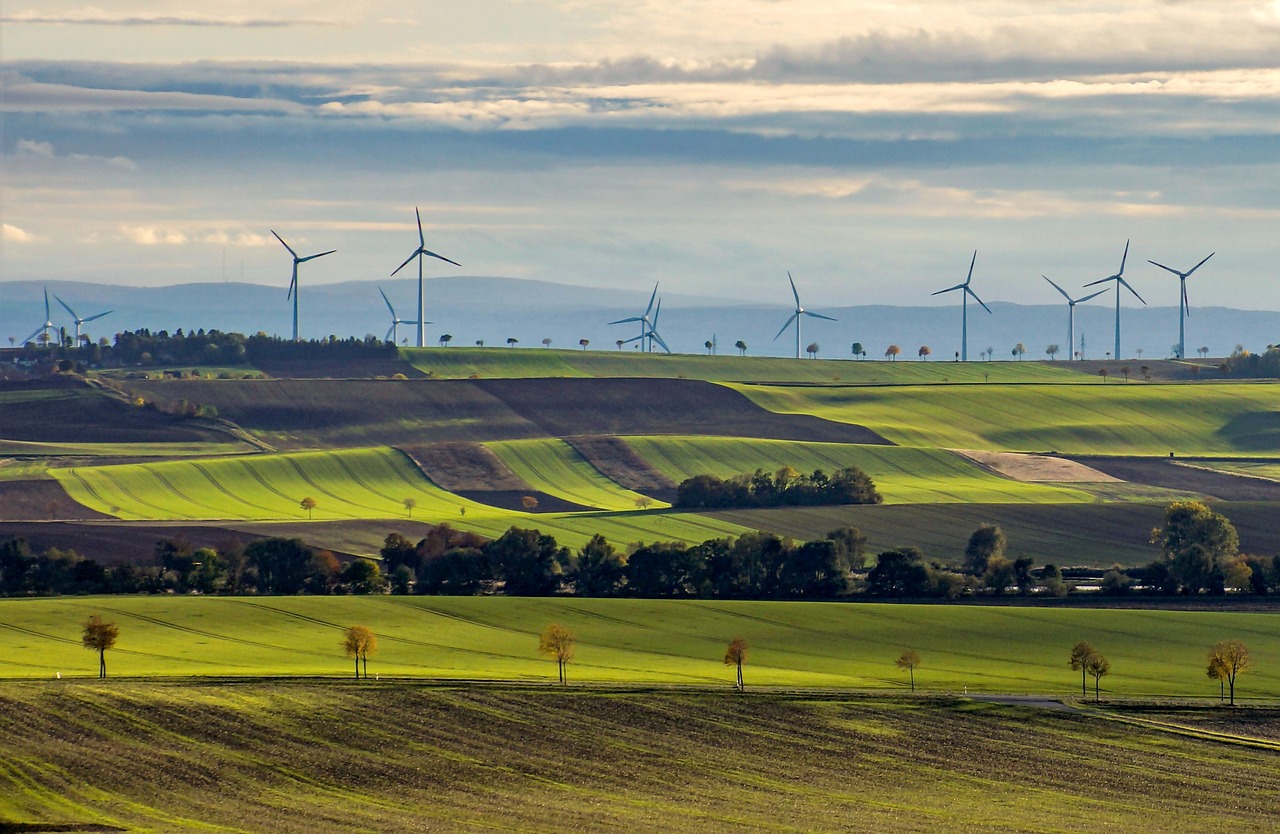In today’s rapidly evolving world, artificial intelligence (AI) is emerging as a game-changer in the realm of renewable energy technologies. With its ability to process vast amounts of data and identify patterns, AI provides invaluable insights that could significantly enhance our approach to sustainable energy. Imagine having a tool that not only predicts energy consumption but also optimises the production of renewable resources—this is the power of AI in action!
As we delve deeper into the intricacies of renewable energy, it’s essential to recognise the multifaceted role AI plays. For instance, AI algorithms can analyse weather patterns, predict energy output from solar panels, and even manage the grid to ensure a seamless supply of energy. This means less waste and more efficiency, which is crucial as we strive to combat climate change and reduce our carbon footprint.
Moreover, AI is not just about improving existing technologies; it also paves the way for innovative solutions. From smart grids to enhanced battery storage systems, the future of renewable energy is bright, and AI is at the forefront of this revolution. As we look ahead, it’s clear that the integration of AI into renewable energy practices will not only optimise current systems but also inspire a new wave of technological advancements.
In conclusion, AI’s insights into renewable energy technologies are not merely beneficial; they are essential for a sustainable future. As we continue to explore this exciting intersection of technology and energy, we must remain committed to leveraging AI to unlock the full potential of renewable resources. After all, our planet’s future depends on it.
Current Trends in Renewable Energy
This article explores the insights provided by artificial intelligence regarding various renewable energy technologies, their advancements, challenges, and future potential in combating climate change.
In recent years, the world has witnessed a significant shift towards renewable energy sources, primarily driven by the urgent need to address climate change. Technologies such as solar, wind, and hydroelectric power are not just buzzwords anymore; they are becoming integral to our energy landscape. For instance, the cost of solar panels has plummeted by over 80% since 2010, making solar energy more accessible than ever before. This dramatic reduction in cost is paving the way for widespread adoption, especially in developing countries.
Moreover, the integration of smart grids is revolutionising how we manage energy consumption. By leveraging advanced technologies, these grids allow for real-time data monitoring and energy distribution, enhancing efficiency and reliability in energy supply. As a result, consumers can now play a more active role in managing their energy use, leading to reduced waste and lower bills.
Additionally, energy storage solutions are rapidly evolving, addressing one of the biggest challenges in renewable energy: intermittency. With advancements in battery technologies, such as lithium-ion and flow batteries, we can store excess energy generated during peak production times for use during low production periods. This capability is crucial for ensuring a stable energy supply and maximising the use of renewable sources.
As we look towards the future, the role of artificial intelligence in optimising renewable energy systems cannot be overstated. AI algorithms are being employed to predict energy demand, optimise generation, and even manage energy distribution, ensuring that we can harness the full potential of renewable resources. These innovations are not just theoretical; they are being implemented globally, with countries like Germany and Denmark leading the charge.
In summary, current trends in renewable energy are marked by significant advancements in technology, cost reduction, and the integration of AI, all of which are crucial for a sustainable future. The momentum is building, and as we continue to innovate, the potential for renewable energy to transform our world is more promising than ever.
| Renewable Energy Source | Cost Reduction (2010-2020) | Current Adoption Rate |
|---|---|---|
| Solar | 80% | Over 40% |
| Wind | 50% | Over 30% |
| Hydroelectric | 25% | Over 15% |
For more information on renewable energy technologies, you can visit IRENA.

AI’s Role in Energy Efficiency
Artificial Intelligence (AI) is rapidly transforming the landscape of energy efficiency, acting as a catalyst for innovation and optimisation across various sectors. Imagine having a smart assistant that not only understands your energy consumption patterns but also suggests ways to cut down on waste. That’s exactly what AI brings to the table! By analysing vast amounts of data, AI can identify inefficiencies that human analysts might miss, leading to significant cost savings and reduced environmental impact.
One of the most striking applications of AI in energy efficiency is its ability to optimise energy consumption in real-time. For instance, smart grids equipped with AI algorithms can dynamically adjust power distribution based on demand, ensuring that energy is used only when and where it’s needed. This not only enhances reliability but also reduces the strain on renewable energy sources. According to recent studies, AI-driven systems can improve energy efficiency by up to 30% in industrial settings alone.
Moreover, AI is making waves in building management systems. By integrating AI with IoT devices, buildings can automatically adjust heating, ventilation, and air conditioning (HVAC) systems based on occupancy and weather conditions. This leads to a more comfortable environment while significantly lowering energy bills. A study by the U.S. Department of Energy highlighted that AI-enhanced buildings could achieve energy savings of 20-50% compared to traditional systems.
However, the journey towards energy efficiency isn’t without its challenges. Factors such as data privacy, high initial investment costs, and the need for skilled personnel can hinder the widespread adoption of AI technologies. Yet, as the technology matures, these obstacles are likely to diminish, paving the way for a greener future.
In conclusion, AI’s role in enhancing energy efficiency is not just a trend; it’s a revolution that promises to reshape how we consume energy. With continuous advancements, the potential for AI to drive sustainability is immense, making it an essential player in the fight against climate change.
Challenges Facing Renewable Technologies
This article explores the insights provided by artificial intelligence regarding various renewable energy technologies, their advancements, challenges, and future potential in combating climate change.
An overview of the latest trends in renewable energy technologies, highlighting innovations and shifts towards sustainable energy sources that are shaping the industry today.
Exploring how artificial intelligence is enhancing energy efficiency across various sectors, optimising consumption, and reducing waste in renewable energy systems.
Despite the remarkable potential of renewable energy technologies, they face a myriad of challenges that hinder their widespread adoption. One major issue is the intermittency of sources like solar and wind, which can lead to inconsistent energy supply. Imagine trying to fill a bathtub with a tap that only works part-time; that’s the reality for many energy providers relying solely on these renewable sources.
Another significant hurdle is the financial burden associated with the initial setup of renewable energy systems. While operational costs may be lower in the long run, the upfront investment can deter potential adopters. According to a recent report, approximately 70% of businesses cite high initial costs as a barrier to implementing renewable technologies.
Moreover, regulatory frameworks can be a double-edged sword. On one hand, they can promote the use of renewable energy; on the other, they can impose stringent requirements that slow down progress. For instance, outdated regulations may not account for recent technological advancements, creating a gap between innovation and implementation.
Lastly, the technological limitations in energy storage and grid integration present another challenge. Current battery technologies struggle to store energy efficiently, which is crucial for balancing supply and demand. As we strive for a greener future, overcoming these obstacles is paramount. To summarise, the primary challenges include:
- Intermittency of renewable sources
- High initial costs
- Regulatory hurdles
- Technological limitations
Addressing these challenges requires innovative solutions and collaborative efforts from governments, industries, and researchers to ensure a smooth transition to a sustainable energy future.
Examining the potential future innovations in renewable energy technologies, driven by AI and other advancements, which could revolutionise the energy landscape.
Evaluating how AI insights can inform and shape energy policies, promoting sustainable practices and supporting decision-makers in the transition to renewable energy sources.
Presenting real-world case studies showcasing successful implementations of AI in renewable energy projects, illustrating the tangible benefits and outcomes achieved through these technologies.

Future of Renewable Energy Innovations
This article explores the insights provided by artificial intelligence regarding various renewable energy technologies, their advancements, challenges, and future potential in combating climate change.
An overview of the latest trends in renewable energy technologies, highlighting innovations and shifts towards sustainable energy sources that are shaping the industry today.
Exploring how artificial intelligence is enhancing energy efficiency across various sectors, optimising consumption, and reducing waste in renewable energy systems.
Discussing the primary challenges that renewable energy technologies encounter, including technical, financial, and regulatory hurdles that impede their widespread adoption.
The is not just bright; it’s dazzling! With the relentless march of technology, we stand on the brink of a revolution in how we harness and utilise energy. Imagine a world where solar panels are not only more efficient but also self-cleaning and capable of generating energy even on cloudy days. This is not science fiction; it’s the potential reality driven by advancements in materials science and AI.
One of the most exciting prospects is the integration of artificial intelligence in energy management systems. AI can analyse vast datasets to predict energy demand and supply fluctuations, allowing for smarter grid management. This means less waste and more efficient distribution of energy resources. For example, AI algorithms can optimise the performance of wind turbines by adjusting their angles in real time based on wind speed data, maximising energy output.
Furthermore, innovations in energy storage technologies, such as advanced batteries and supercapacitors, are crucial for addressing the intermittency of renewable sources. As we explore these advancements, we must also consider the role of policy in fostering innovation. Governments need to create frameworks that encourage investment in renewable technologies and support research and development.
In summary, the future holds a plethora of exciting innovations in renewable energy technologies. With AI leading the charge, we can expect a significant transformation in how we generate, store, and consume energy, paving the way for a sustainable future.
Evaluating how AI insights can inform and shape energy policies, promoting sustainable practices and supporting decision-makers in the transition to renewable energy sources.
Presenting real-world case studies showcasing successful implementations of AI in renewable energy projects, illustrating the tangible benefits and outcomes achieved through these technologies.
Impact of AI on Policy Making
This article explores the insights provided by artificial intelligence regarding various renewable energy technologies, their advancements, challenges, and future potential in combating climate change.
An overview of the latest trends in renewable energy technologies, highlighting innovations and shifts towards sustainable energy sources that are shaping the industry today.
Exploring how artificial intelligence is enhancing energy efficiency across various sectors, optimising consumption, and reducing waste in renewable energy systems.
Discussing the primary challenges that renewable energy technologies encounter, including technical, financial, and regulatory hurdles that impede their widespread adoption.
Examining the potential future innovations in renewable energy technologies, driven by AI and other advancements, which could revolutionise the energy landscape.
The impact of artificial intelligence on policy making in renewable energy is profound and multifaceted. AI technologies can analyse vast amounts of data, providing insights that help policymakers make informed decisions. By leveraging AI analytics, governments can identify trends, forecast energy demands, and evaluate the effectiveness of existing policies. For instance, AI can simulate various scenarios, allowing decision-makers to understand potential outcomes of different policy approaches.
Moreover, AI’s ability to process real-time data is invaluable in developing responsive policies that adapt to changing energy landscapes. This agility can lead to more effective regulations that promote sustainable practices and encourage investments in renewable technologies. For example, AI can assist in optimising grid operations, thereby facilitating the integration of diverse energy sources, which is crucial for achieving energy efficiency.
However, challenges remain. The complexity of AI systems can create barriers to understanding and trust among policymakers. To counter this, it is essential to foster collaboration between AI experts and government officials. By doing so, we can ensure that AI tools are used effectively to inform policy decisions while addressing public concerns.
In summary, the role of AI in shaping energy policies is not just about optimisation; it is about creating a framework that supports the transition to renewable energy. As we move forward, embracing AI’s potential will be crucial for developing policies that not only meet current energy needs but also pave the way for a sustainable future.
For further reading on how AI is influencing energy policies, check out this article.

Case Studies of AI in Renewables
This article explores the insights provided by artificial intelligence regarding various renewable energy technologies, their advancements, challenges, and future potential in combating climate change.
An overview of the latest trends in renewable energy technologies, highlighting innovations and shifts towards sustainable energy sources that are shaping the industry today.
Exploring how artificial intelligence is enhancing energy efficiency across various sectors, optimising consumption, and reducing waste in renewable energy systems.
Discussing the primary challenges that renewable energy technologies encounter, including technical, financial, and regulatory hurdles that impede their widespread adoption.
Examining the potential future innovations in renewable energy technologies, driven by AI and other advancements, which could revolutionise the energy landscape.
Evaluating how AI insights can inform and shape energy policies, promoting sustainable practices and supporting decision-makers in the transition to renewable energy sources.
The integration of artificial intelligence in renewable energy projects has led to remarkable advancements and successes. One compelling case study is the collaboration between Google and DeepMind, where AI was employed to optimise energy usage in data centres. This initiative resulted in a 40% reduction in energy consumption, showcasing how AI can significantly enhance energy efficiency in large-scale operations.
Another noteworthy example is the use of AI in wind energy. Companies like Siemens Gamesa have developed AI algorithms that predict wind patterns and optimise turbine performance. This not only maximises energy output but also reduces maintenance costs, leading to a more sustainable approach to wind energy production. The following table summarises key insights from these case studies:
| Case Study | Technology Used | Results |
|---|---|---|
| Google & DeepMind | AI for Data Centres | 40% energy reduction |
| Siemens Gamesa | AI for Wind Turbines | Optimised performance & reduced costs |
Moreover, AI is also making waves in solar energy. Startups like SolarEdge utilise AI-driven analytics to monitor solar panel performance, ensuring maximum efficiency and timely maintenance. This proactive approach not only enhances the longevity of solar installations but also boosts overall energy production.
In conclusion, these case studies illustrate the transformative impact of AI in the renewable energy sector. By leveraging AI, companies can not only improve operational efficiency but also contribute to a more sustainable future. For further reading on AI applications in renewable energy, check out Renewable Energy World.
Frequently Asked Questions
- What are the main advantages of renewable energy technologies?
Renewable energy technologies offer numerous benefits, including reduced greenhouse gas emissions, decreased reliance on fossil fuels, and lower energy costs in the long run. They contribute to a cleaner environment and promote sustainable development, making them essential in the fight against climate change.
- How does AI improve energy efficiency?
AI enhances energy efficiency by analysing vast amounts of data to optimise energy consumption patterns. It can predict demand, manage resources more effectively, and even automate systems to reduce waste. Think of it as having a smart assistant that knows exactly when and how to use energy most efficiently!
- What challenges do renewable energy technologies face?
Some of the primary challenges include high initial costs, technical limitations, and regulatory hurdles. Additionally, integrating renewable sources into existing energy grids can be complex, requiring innovative solutions and collaborative efforts across various sectors.
- What future innovations can we expect in renewable energy?
The future holds exciting prospects, such as advancements in energy storage, smart grids, and more efficient solar panels. AI is likely to play a crucial role in these innovations, helping to create a more resilient and sustainable energy landscape.
- How can AI influence energy policy making?
AI can provide valuable insights and data-driven analyses that inform policy decisions. By predicting outcomes and assessing the impact of various strategies, AI helps policymakers create more effective and sustainable energy policies that align with global climate goals.
- Are there any successful case studies of AI in renewable energy?
Absolutely! Numerous case studies highlight the successful integration of AI in renewable energy projects, showcasing improvements in efficiency, cost savings, and overall performance. These examples serve as a testament to the transformative power of AI in driving the renewable energy sector forward.


